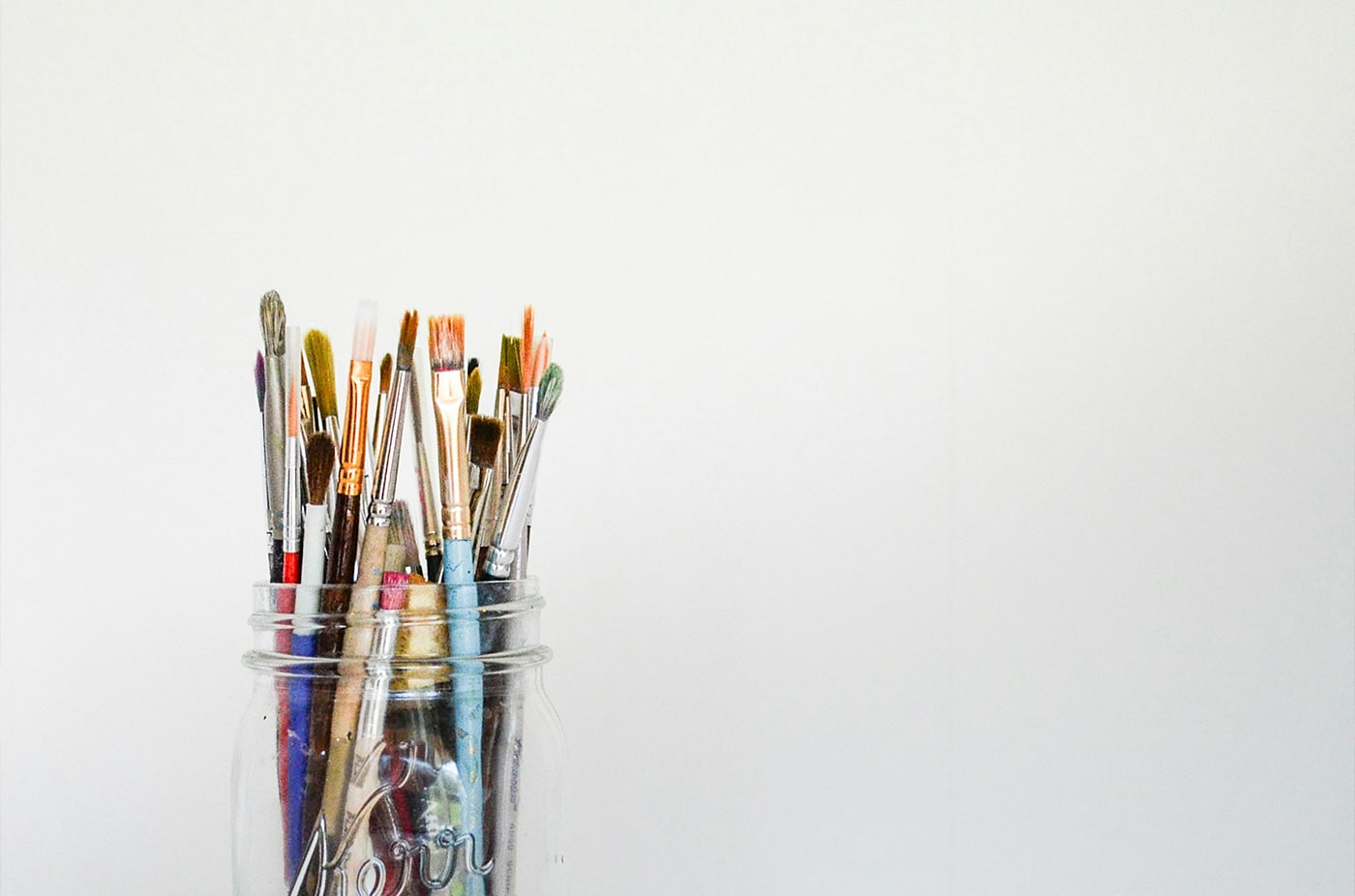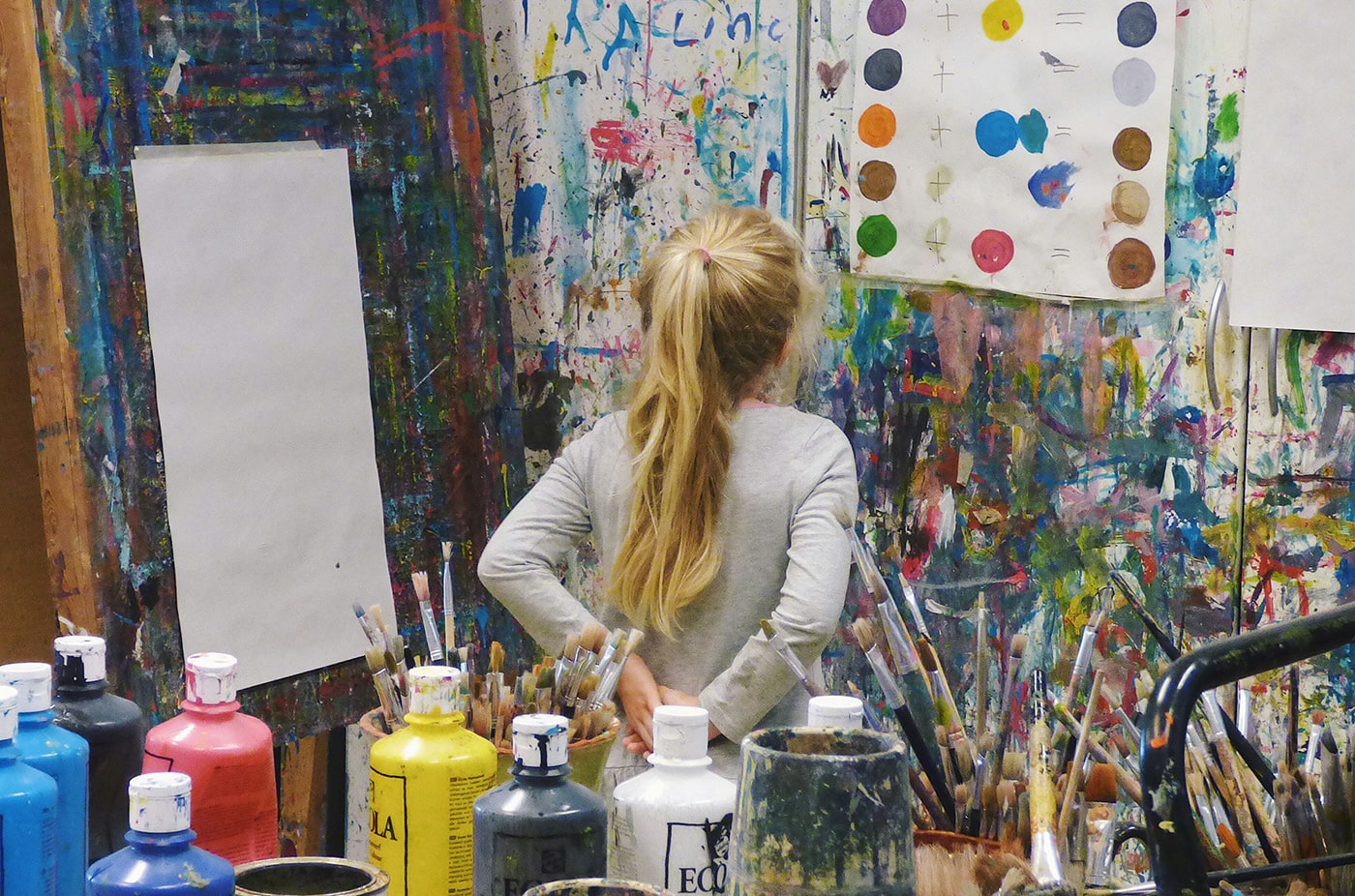How to Organise Your Art Studio – A Checklist for Artists

Photo by Debby Hudson on Unsplash
Organising your art studio can be revitalizing to your creative process, providing a fresh and inspiring environment for your artistic pursuits. Whether your studio is a small corner of your home or a large dedicated space, having a decluttered and well-organised area can significantly enhance your productivity and creativity. Here’s an artist’s checklist to help you organize and declutter your art studio.
1. Start with A Clear Vision
Before diving into the physical organisation of your space, take a moment to envision your ideal studio. Consider how you want the space to function and feel. Do you need more room for painting, a better setup for digital work, or simply a cleaner, more inspiring environment? Having a clear goal will guide your decluttering and organizing process, ensuring the end result aligns with your artistic needs.
2. Streamline and Organise Supplies
A cluttered workspace can inhibit creativity from the outset. Adopt a systematic approach: group your art materials by category—such as markers, paints, and brushes—and allocate them to specific containers. There are a variety of options when it comes to containers and storage solutions for you to choose from:
-
Clear Pouches: These are invaluable for categorising similar items such as pens, markers, and small tubes of paint.
Their transparency allows for quick identification, and they can easily be tucked into drawers or hung on hooks.
-
Mason Jars and Glass Containers: Perfect for brushes, pens, and markers, their clear nature allows for easy
identification of contents. Plus, they add an aesthetic appeal to the workspace.
-
Decorative Tins and Boxes: These can be used for storing finished pieces, scraps, or even collections of buttons,
beads, and other small items. Their aesthetic can complement the studio's decor, making storage both functional and
decorative.
-
Stackable Plastic Bins: For larger supplies or bulk items, stackable bins can save significant space. Labeling these
bins helps in maintaining an organized system where everything is easily accessible.
-
Magnetic Strips: A clever solution for metal tools such as scissors and palette knives. Installing magnetic strips
keeps these tools off work surfaces but within easy reach.
-
Pegboards: Offering ultimate customisation, pegboards can be outfitted with hooks, shelves, and bins to store a
variety of supplies. This solution keeps tools visible and accessible while maximizing vertical space.
-
Rolling Carts: For supplies that are frequently used or for artists who work in multiple spaces, rolling carts offer
mobility and flexibility. They can be organized by project, medium, or tool type and moved as needed.
-
Spice Racks: An inventive way to organize small containers of paint, glitter, or other embellishments. Their tiered
design allows for easy visibility and access without taking up too much space.
-
Drawer Dividers: For supplies best stored out of sight, drawer dividers can keep items sorted and prevent them from
getting mixed up. This is especially useful for paper goods, stencils, and other flat items.
 Photo by Bárbara Fróes on Unsplash
Photo by Bárbara Fróes on Unsplash
3. Declutter with Intent
One of the most effective strategies for organizing your studio is to consciously declutter. Examine your materials and tools; if they're no longer useful due to wear or irrelevance, consider them for donation, recycling, or creative repurposing. Clearing out unnecessary items can dramatically open up your creative space, making it more conducive to art-making by minimising distractions and decision fatigue.
4. Optimise the Layout
Optimising your art studio layout enhances functionality, accommodating your creative workflow efficiently. Begin by evaluating your movement within the space, ensuring that frequently used supplies are within easy reach of your main work area. This might mean positioning your primary workstation, like an easel or drafting desk, centrally, with essential tools and materials on adjacent shelves or a nearby rolling cart. Such arrangements reduce unnecessary movement, facilitating a smoother creative process.
For those who engage in multiple mediums, establishing dedicated zones for each type of work can greatly improve productivity. Make sure each area is well-lit, with both overhead and task lighting, and try to utilize natural light to enhance your work environment. Adjustable lamps are particularly useful for directing light precisely where it's needed.
Incorporating modular furniture into your studio—like adjustable shelves, foldable tables, or easels on wheels—offers flexibility, allowing you to reconfigure your space as your projects or preferences change. This adaptability not only maintains operational efficiency but also stimulates creativity by enabling you to tailor your surroundings to the evolving demands of your art. By focusing on strategic placement, dedicated zones, and optimal lighting, your studio becomes a supportive backdrop to your creative endeavours, blending inspiration with practicality.
5. Infuse Your Space with Inspiration
Revitalize your studio by infusing it with decorative elements that reflect your unique artistic identity. You can personalise your workspace by adorning it with your own art pieces, plants, or any objects that fuel your creativity. Embrace the use of stylish storage options, such as ornate jars and artistically designed boxes, to blend functionality with personal flair. By curating a space filled with items that match your personal aesthetic, you will transform your studio into a source of constant inspiration and a true reflection of your creative self.
6. Establish Organisational Habits
Consistent upkeep is key to preserving the organization of your art studio. Commit to a schedule that includes putting supplies back in their designated spots and performing routine cleaning tasks. This habit not only prevents clutter from accumulating but also ensures your studio remains a welcoming and efficient space for creation.
Indeed, organising your art studio is a rewarding process that can significantly impact your productivity and creativity. By following this checklist, you’ll create a space that not only meets your practical needs but also inspires and supports your artistic journey. Remember, the goal is to create a studio that feels personal, functional, and conducive to your creative process. Happy organising!
By Shreya Alagramam from Artezaar.com
Time to get organised! Book your stand for World Art Dubai 2024 here.